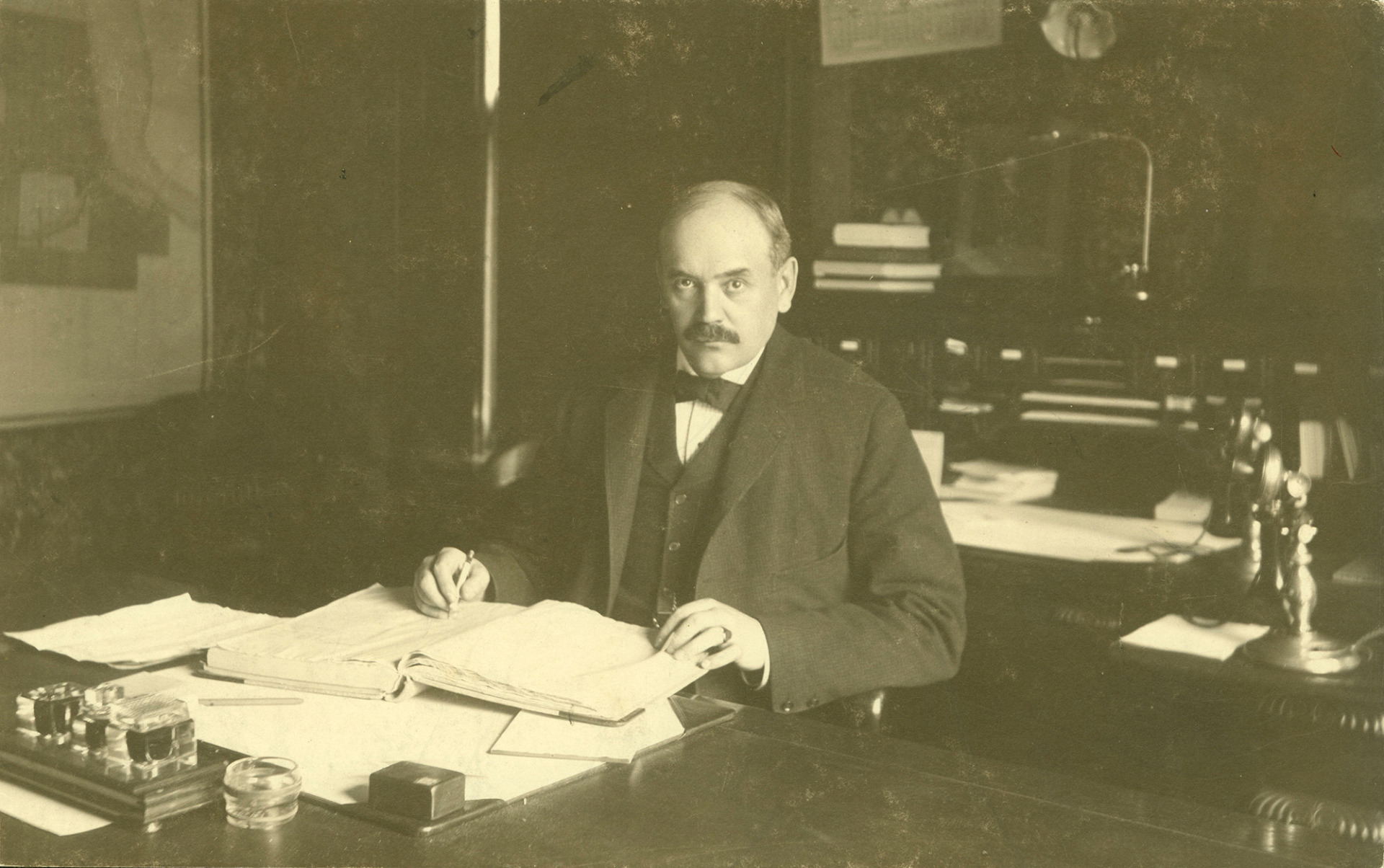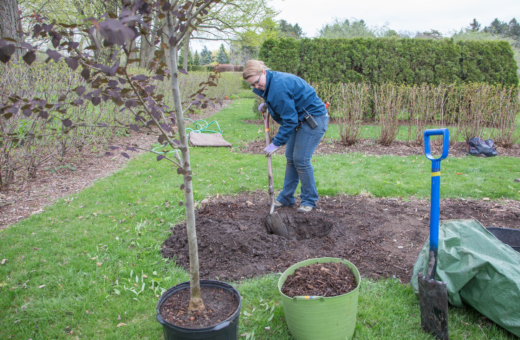Blog Post
January 13, 2022
The Legacy of Joy Morton
The Morton Arboretum’s founder, Joy Morton (1855–1934), was one of Chicago’s prominent industrialists in the late 19th and early 20th centuries. His parents, Caroline and Julius Sterling (J. Sterling) Morton, left Michigan in 1854 to become early settlers of Nebraska City, Nebraska. J. Sterling Morton encouraged the planting of trees to help the environment and make the Great Plains more attractive and habitable to Easterners. “Plant Trees” was the family motto.
Joy Morton (his first name was his mother’s surname) was the eldest of four brothers. At age 15, he ended his education to go into business, working for a bank and railroads, and as manager of his father’s property before moving to Chicago in 1880 to enter the salt business. By 1887 he had bought out his partner and become president of Joy Morton and Co., eventually incorporated as the Morton Salt Co.
Morton and his first wife, Carrie, raised their two children, Jean and Sterling, in the Groveland Park neighborhood on Chicago’s South Side. In 1909, Morton bought property 25 miles west of Chicago in Lisle for a rural estate to provide a respite from the city. He had discovered the site, with its groves of native oaks, when he and a friend, out for a drive in the countryside, stopped to put out a brush fire at the top of a hill that overlooked the east branch of the DuPage River.
He built a home on the hill and named the estate Thornhill, both for its location and for the hawthorn trees around it. Over the next several years, he expanded his holdings, buying dozens of small farms and farmers’ woodlots, preparing to create an arboretum—what he called a living museum of trees. Carrie died in 1915, and in 1917 Morton married Margaret Gray, who, like Joy Morton’s children, became a philanthropist and a patron of the Arboretum.
He had first seen such tree-focused gardens in 1873, when he visited the new Arnold Arboretum in Boston with his father and met its director, Charles Sprague Sargent. Almost half a century later, after visiting many gardens in his world travels, Joy Morton asked Sargent’s advice about establishing an arboretum at Thornhill. Sargent encouraged him to focus his arboretum on research, and he offered extensive advice about plants for the collections and books for the library.
On December 14, 1922, Morton, in the presence of his family and Morton Salt Co. executives, signed a trust indenture document establishing The Morton Arboretum and dedicated it to “scientific research work in horticulture … particularly in the growth and culture of trees, shrubs, vines, and grasses, by means of a great outdoor museum arranged for the convenient study of every species, variety, and hybrid of woody plants of the world able to support the climate of Illinois, such museum to be equipped with an herbarium, a reference library, and laboratories for the study of trees and other plants … in order to increase the general knowledge and love of trees and shrubs, and bring about an increase and improvement in their growth and culture.”
By the time of Morton’s death in 1934, the Arboretum held the most diverse collection of woody plants in the region and had established a botanical library and herbarium. He was succeeded as chair of the tree museum he had founded by his daughter, Jean Cudahy. His son Sterling succeeded her after her passing in 1953; and in 1961 Sterling’s daughter, Suzette Davidson became chair. In 1977, Suzette retired from the board and Charles C. Haffner III, a trustee since 1964, became the first person outside the Morton family to lead the board as chairman.
The final resting place for Joy Morton and other family members is the Morton Family Cemetery near the Thornhill Education Center, on the Arboretum’s West Side.



